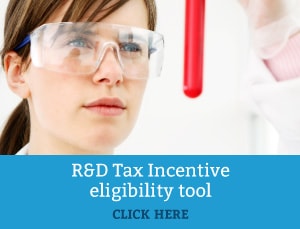St Patrick’s Day Special: Could You Be Claiming the R&D Tax for Beverage Innovation?
March 16th, 2016 March 17th, the annual holiday honouring Irish heritage—or of a cartoon version thereof anyway—is indeed a day worth celebrating for the makers and purveyors of whiskey, beer and green attire. However, holiday or not, the whiskey beverage industry may already be celebrating due to a soar in popularity in recent years.
March 17th, the annual holiday honouring Irish heritage—or of a cartoon version thereof anyway—is indeed a day worth celebrating for the makers and purveyors of whiskey, beer and green attire. However, holiday or not, the whiskey beverage industry may already be celebrating due to a soar in popularity in recent years.
In fact, Australians now drink almost 19 million glasses of whiskey in an average four weeks—around three million more glasses than in 2009. Moreover, young Australian’s in their 20s and 30s have replaced over-65s as the nation’s biggest whiskey drinkers, thanks to what market researchers have coined the “Mad Men effect”. Nonetheless, the steady rise of whiskey drinkers, aside from the Don Draper aspirants, is most likely due to more options being available in the market.
Ultimately, the variant of alternatives available for the beverage comes down to an investment in research and development (R&D) to expand the products scope. In the Fast Moving Consumer Goods (FMCG) industry, food and beverage innovation is one of the critical factors of success. As a consequence, R&D typically occurs in several disciples within this industry, such as: food science, manufacturing, chemistry, mechanical and chemical engineering.
Consider Johnnie Walker, for instance, who created an interactive whiskey software product. The company created a bottle which sends personalised communications to the user if they wave a smartphone in front of it, for example a promotional offer or a cocktail recipe. The bottle can be tracked down the supply chain, from the manufacture to end product user, allowing for detailed customer insights.
Thus, from developing and testing the beverage formulation to giving the tangible product a ‘digital make-over’, the options for innovation in this field are seemingly broad. However, it is an often overlooked fact that the expenditure incurred to bring these innovations to market is potentially available for a tax rebate of up to 43.5 per cent.
To elaborate, the Australian Government offers an R&D Tax Incentive which assists in offsetting the costs of R&D and improving a company’s cash flow. The incentive scheme offers a refundable 43.5% tax offset for companies with an aggregated turnover of less than $20 million per annum, as well as a non-refundable 38.5% tax offset for other eligible companies.
On the whole, R&D is a valuable tool for growing and improving products – whether that is for expanding the horizons of whiskey or simply growing innovation within your own businesses area. The government has a purposely broad range of industries which qualify for the incentive to encourage innovation in Australia. As noted above, the program operates as a tax offset, which means companies undertaking eligible R&D activities can fundamentally receive a reward back from the government. Could the R&D Tax Incentive be the luck you need this St Patrick’s Day?
Categories
- ATO Guidance and Materials
- AusIndustry Guidance and Materials
- Case Law
- Federal Budget 2021
- Federal Budget 2022
- For Accountants
- General Information
- Government Policy and Treasury
- Industry Specific Issues
- Interpretative Decisions
- Legislation and Parliamentary Matters
- R&D Tax Credit
- R&D Tax Funding Strategies
- R&D Tax Loans
- Recent News
- Tax Determinations
Archives
- April 2024
- March 2024
- February 2024
- January 2024
- December 2023
- November 2023
- October 2023
- September 2023
- August 2023
- July 2023
- June 2023
- May 2023
- April 2023
- March 2023
- February 2023
- January 2023
- December 2022
- November 2022
- October 2022
- September 2022
- August 2022
- July 2022
- June 2022
- May 2022
- April 2022
- March 2022
- February 2022
- January 2022
- December 2021
- November 2021
- October 2021
- September 2021
- August 2021
- July 2021
- June 2021
- May 2021
- April 2021
- March 2021
- February 2021
- January 2021
- December 2020
- November 2020
- October 2020
- September 2020
- August 2020
- July 2020
- June 2020
- May 2020
- April 2020
- March 2020
- February 2020
- January 2020
- December 2019
- November 2019
- October 2019
- September 2019
- August 2019
- July 2019
- June 2019
- May 2019
- April 2019
- March 2019
- February 2019
- January 2019
- December 2018
- November 2018
- September 2018
- July 2018
- June 2018
- May 2018
- April 2018
- March 2018
- February 2018
- January 2018
- December 2017
- November 2017
- September 2017
- August 2017
- July 2017
- June 2017
- May 2017
- April 2017
- March 2017
- February 2017
- January 2017
- December 2016
- November 2016
- October 2016
- September 2016
- August 2016
- July 2016
- June 2016
- May 2016
- April 2016
- March 2016
- February 2016
- January 2016
- December 2015
- November 2015
- October 2015
- September 2015
- August 2015
- July 2015
- June 2015
- May 2015
- April 2015
- March 2015
- February 2015
- January 2015
- November 2014
- October 2014
- September 2014
- August 2014
- July 2014
- June 2014
- May 2014
- April 2014
- March 2014
- February 2014
- January 2014
- December 2013
- November 2013
- October 2013
- September 2013
- May 2013
- April 2013
- March 2013
- September 2012
- August 2012
- June 2012


 Free Call: 1300 009 390
Free Call: 1300 009 390





 News & Research
News & Research



